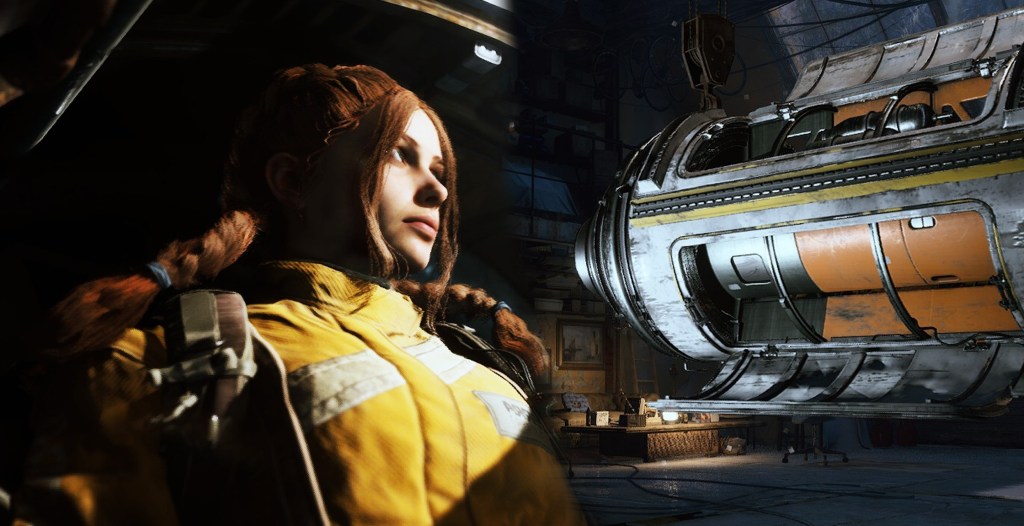America now has a drone that can drop nukes.
The Pentagon showed off its first new stealth bomber in decades on December 2. For weeks, the U.S. military and manufacturer Northrop Grumman had been building up the reveal by posting pictures of the cloth-draped aircraft and promising a “new technology” ready to fight “future threats.” In an hour-long presentation, the Air Force finally unveiled the B-21 Raider, a bomber that can deliver a nuke and is capable of both manned and unmanned operations.
Videos by VICE
The Air Force wheeled out the B-21 Raider as part of a long video presentation overseen by U.S. Secretary of Defense Lloyd Austin. His speech repeatedly mentioned that America needed the bomber to deter other nations.
“Strengthening and sustaining U.S. deterrence is at the heart of our national defense strategy. And so is our uniquely American spirit of innovation and invention,” Austin said. “And if you wanna see that strategy in action, if you wanna see America’s enduring advantages in action, if you wanna see integrated deterrence in action, well just look at this aircraft. Y’know, the B-21 looks imposing, but what’s under the frame and the space age coatings is more impressive.”
The B-21 is the successor to the B-2, a similar-looking stealth bomber that was unveiled with similar fanfare in 1988. The lead-up and reveal of the B-21 was surreal in its jingoism. Northrop Grumman first teased the aircraft in a Superbowl ad in 2015, as if it were the latest Marvel movie. On the day of the reveal, Northrop Grumman employee Johan Riley opened the presentation by singing the National Anthem as a procession of older bombers, including the B-52 and the B-2, flew overhead.
After he finished, Northrop CEO Kathy Warden took the stage. “What a wonderful way to begin an incredible and historic evening: our national anthem with the percussion of true air power overhead,” she said. “I want to thank Global Strike Command for that amazing flyover.”
When Warden left the stage, orchestral music played and the camera focused on the plain front of an aircraft storage hanger. The doors slid back. Backlit by blue lights, the bomber was revealed draped in a white cloth. The blue lights flashed in intensity to the beat of the music. As the music swelled, the white cloth was pulled back and the B-21 stood before the audience in all its glory. They clapped as the blue lights flash and the deliverer of nuclear fire wheeled forward to meet its audience.
“Ladies and gentleman,” a voice said. “Our nation’s B-21 Raider.” The audience cheered.
Stealth bombers are an important part of the American nuclear triad. The U.S. is capable of launching a nuclear weapon from missile silos, submarines patrolling the globe, and from bombers. The idea is that should an enemy ever destroy one leg of the triad, the other two could survive to carry out a retaliatory strike. This, we’re told, keeps anyone from nuking the U.S. “America’s defense will always be rooted in deterring conflict. So we are again making it plain to any potential foe: the risk and the cost of aggression far outweigh any conceivable gains,” Austin said while showing off the B-21.
The Air Force decided to replace the B-2 in 2011. It awarded Northrop Grumman the contract for that replacement in 2015. Among it’s requirements were a demand that the new bomber be able to drop a nuke and that it could fly unmanned. The option for the Raider to go drone mode is highlighted on the official fact sheet for it on the Air Force’s website and in the same sentence as its nuclear capability. “It will be nuclear capable and designed to accommodate manned or unmanned operations,” the fact sheet said.
The first flights of the B-21 won’t happen until 2023 and it’s unclear if it will ever fly unmanned with a nuclear payload. But both requirements have been on the Pentagon’s mind since at least 2015. An Inspector General report from the time, obtained by The Warzone via a Freedom of Information Act Request, showed that the Air Force wanted a new bomber that could deliver a nuke and fly while without a pilot.
“I direct the Air Force to develop an acquisition program that delivers a survivable long range penetrating bomber capable of manned and unmanned operations where range, payload, and survivability are balanced with production cost,” said a letter from the Secretary of Defense quoted in the report.
It’s impossible to know if the B-21 will ever fly without a human pilot while armed with nukes. But it’s an attractive option for the Pentagon for several reasons. Drones can stay up in the air much longer than human pilots and they tend to make fewer mistakes in the air. Before the age of intercontinental ballistic missiles and nuclear capable submarines, nuclear bombers criss-crossed the globe 24 hours a day, 7 days a week. Many of the pilots took speed to keep up with the brutal hours. There were crashes, accidents, and nuclear disasters. The bombers lost more than a few nuclear weapons.
The Pentagon is promoting the B-21 as more than just a nuclear drone though. According to the Air Force, the bomber is an “open platform” capable of multiple upgrades. It will apparently be able to stay in the field for long hours, act as a battlefield coordinator for other aircraft, and gather intelligence. Austin also said it’s future-proof. “So as the United States continues to innovate, this bomber will be able to continue to defend our country with new weapons that haven’t even been invented yet,” he said.
More
From VICE
-

Screenshot: Embark -

Samuel J Coe/Getty Images -

Pokemon GO's Holiday Part 1 event 2025

